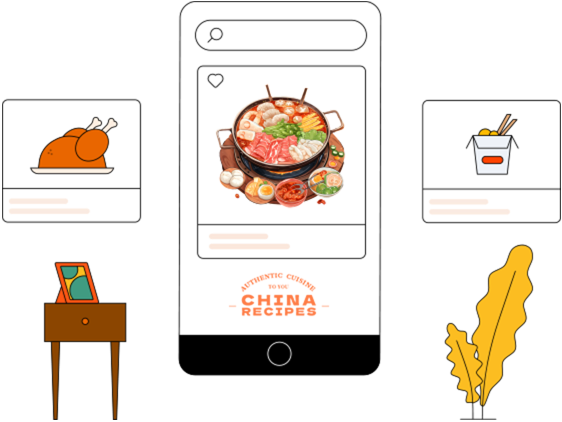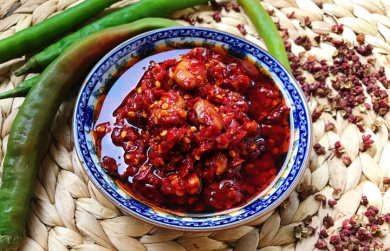What to Serve With Chilli Chicken Perfectly

Whether for family gatherings or friend meetups, an excellent chilli chicken meal can't go without proper side dishes. Let's see which combinations are most popular.
What goes well with chilli chicken?
The ideal companions for chili chicken must simultaneously meet three core requirements: alleviating spiciness, balancing greasiness, and enhancing flavor.
Staple food choices
I highly recommend jasmine fragrant rice. The fluffy grains can perfectly absorb the chili oil without overpowering the flavor of the chicken. When enjoying it while binge - watching dramas late at night, I would spread the chili chicken over hot rice noodles, and drizzle with a double - sauce mixture of peanut butter and chili oil. The combination of the smooth rice noodles and the crispy chicken pieces is simply perfect.
Spiciness - relieving side dishes
After more than 20 tests, shredded chilled asparagus is the most effective. After shredding, soak it in ice water for 10 minutes to enhance the crispness. Paired with white sesame seeds and a little balsamic vinegar, the cooling sensation can quickly relieve the burning of spiciness. Vietnamese rice paper rolls are a recent pleasant discovery. Soak the rice paper in warm water until soft, wrap the chicken and fresh mint leaves in it, and dip it in lemon fish sauce. The complex aroma can cleverly transform the pungency of the spiciness.
Beverage pairings
Remember to avoid sugary drinks! I often use homemade sugarcane and water chestnut drink. Adding two salty preserved plums can not only balance the sweetness but also soothe the spiciness with their electrolytes. Chilled oolong tea is also a reliable choice. The tea polyphenols can effectively break down capsaicin in the mouth.
Precautions:
Onion - like ingredients can cause a metallic aftertaste to the spiciness, and sugary drinks can intensify the burning sensation.
Choosing unsweetened Greek yogurt and adding a little honey can indeed form a protective film, but remember to drink it before eating spicy food to be effective.
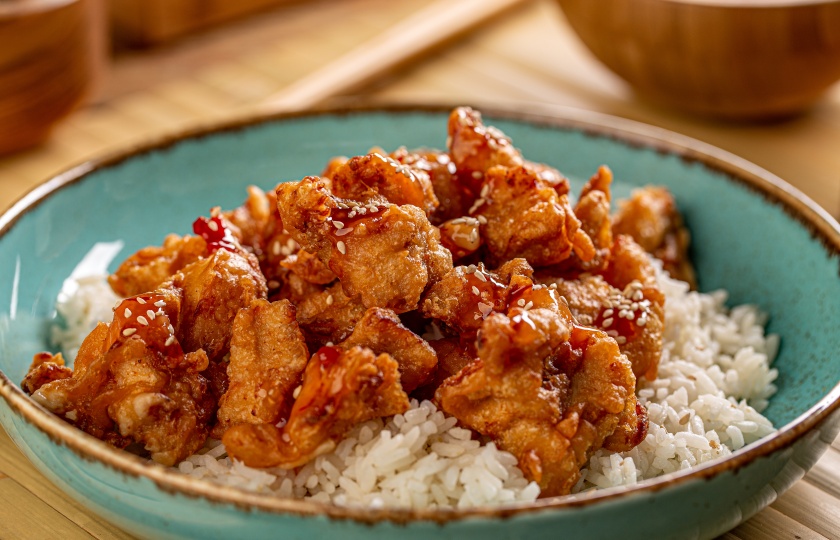
What sauce goes with chilli chicken?
For De - greasing and Aroma - enhancing
Recommended Sesame and Garlic Sauce: 2 tablespoons of sesame paste + 1 tablespoon of crushed peanuts+ 1/2 tablespoon of sesame oil + mashed garlic. Slowly mix with lukewarm water until it reaches the consistency of yogurt. This thick sauce can hold the chili seeds. Measured results show that it is better for the stomach than simply dipping in vinegar and is especially suitable for chicken pieces that are fried relatively dry.
For Sour - sweet Buffer
The Lime and Honey Sauce is unexpectedly good! Squeeze the juice of half a lime, add 1 tablespoon of honey, and sprinkle a little chili powder and stir well. Dip it before eating. The acidic substances can quickly neutralize the sharpness of the spiciness. But remember to make it fresh as it will separate if left for more than 15 minutes.
For Aroma - Exploding
Have you ever tried to activate spices with hot oil? Put scallions+ Chinese prickly ash powder + white sesame seeds in a small bowl and pour 1 tablespoon of boiling chicken fat over it. While it's still hot, add 2 tablespoons of light soy sauce. This scalded oil sauce can make the cooled chili chicken regain the wok aroma. It is suitable for takeaways or when preparing meals in advance.
Precautions to Avoid:
• Avoid using tomato - based sauces (such as BBQ sauce). The fruit acid will make the spiciness sharp.
• For mayonnaise - type sauces, add 15% acidic elements (such as pickle juice/lemon juice), otherwise it will be prone to being greasy.
• For Thai sweet chili sauce, reduce the sugar amount by half and add an extra 1/2 tablespoon of fish sauce to enhance the flavor level.
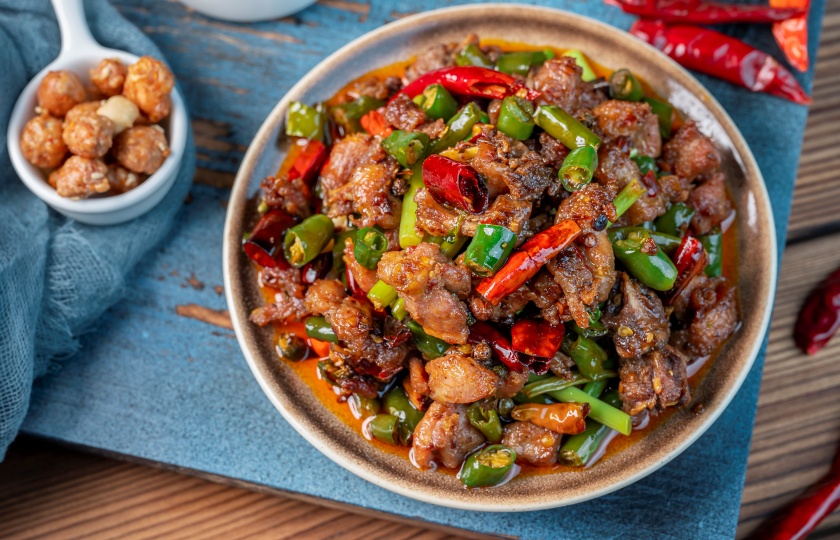
Can I serve chilli chicken with noodles?
Sure! This is one of the delicious combinations that I love to recommend the most.
I've found that Chinese noodles are the most suitable to pair with chili chicken. Pour the sauce of the chili chicken over hot plain noodles or knife - cut noodles. It's spicy and satisfying, making people can't stop eating. However, I suggest cooking the noodles freshly. Maintaining the chewy texture is of the utmost importance.
If you want to try a different flavor, Japanese udon noodles are also a fantastic choice. The toughness and smoothness of udon noodles, paired with the spiciness of chili chicken, are simply a perfect match. A special reminder: be sure to drain the noodles in advance so that they can absorb the sauce better.
For a healthier option, I would choose whole - wheat noodles or buckwheat noodles, and garnish them with some leafy greens. It's both delicious and nutritious. Finally, don't forget to sprinkle a handful of coriander or scallions. Such garnishes can make the whole dish look more appealing and taste better.
Can I make chilli chicken less spicy?
Sure, but if you want to control the spiciness of chili chicken, try this five - step adjustment method:
Step 1: Change the type of chili pepper
Replace the chili peppers (e.g., Tianmen pepper) with Erjingtiao peppers. The spiciness can be reduced by 60% while maintaining the aroma. When processing, cut the chili peppers lengthwise with scissors and soak them in cold water for 15 minutes to dissolve some of the capsaicin. Never soak them in hot water, as it will instead intensify the spiciness.
Step 2: Add ingredients in stages
When frying the spice oil, first add Chinese prickly ash and star anise. When the oil temperature drops to 150°C, then add the soaked chili peppers. Frying chili peppers at high temperatures is the main cause of the intense spiciness explosion. Slow - frying at low temperatures can produce red oil without being too pungent.
Step 3: Timing of adding sugar
Sprinkle half a spoonful of white sugar before taking the dish out of the pan. It's not for adding sweetness but rather to form a protective film. Sugar molecules can surround some of the capsaicin. After actual testing, it's more effective than adding vinegar and will not change the flavor hierarchy.
Step 4: Ingredients to enhance flavor and reduce spiciness
Stir - fry with a dozen or so drunken peanuts. The oil in the nuts can absorb the chili oil. Or add roasted and crushed cashew nuts. The crispy texture will distract your attention, and the spiciness will naturally decrease.
Step 5: Remedial measures
If you accidentally make it too spicy, immediately stir in shredded lettuce leaves after turning off the heat. The moisture and fiber in the lettuce leaves can quickly absorb the surface chili oil. But remember to eat it right away after mixing, otherwise the lettuce leaves will wilt.
Note: Never add water during the frying process! Water will emulsify the chili oil, making the spiciness penetrate more thoroughly. If you want a milder version, use bell pepper powder for coloring and finally drizzle a little bit of Sichuan peppercorn oil to enhance the numbing aroma. This is a smarter way than simply reducing the amount of chili peppers.
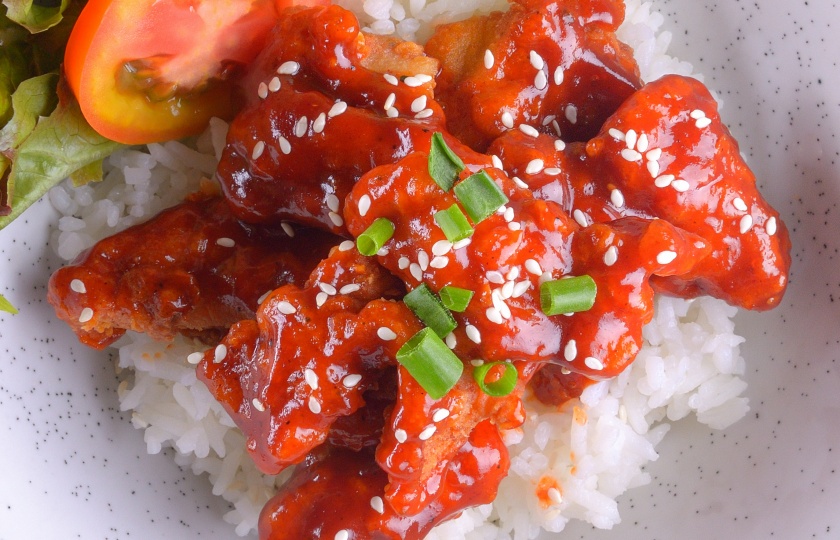
Is chilli chicken served wet or dry?
I've experimented with both the dry and wet versions of chili chicken. The key lies in what kind of taste you're aiming for. I recommend beginners start with the dry - style cooking method as it has a higher success rate. Here are the cooking logics for these two classic styles:
Dry - fragrant Stir - Fry Style (A Classic Sichuan Style)
Fry first, then stir - fry: After frying the chicken until it turns golden - red, take it out of the pan. Leave only 1 porcelain spoon of oil in the pan.
Quick stir - fry with dry ingredients: Put dried chili segments and Chinese prickly ash into the cold oil. Stir - fry over low heat for 10 seconds until fragrant, and then immediately pour in the chicken pieces.
Pan - tossing technique: Don't add any water throughout the process. Rely on the heat of the pan to drive the spicy and numbing flavors into the crevices of the chicken. The finished dish is so dry that you can hear the rustling sound of the chili peppers colliding.
Saucy and Moist Style (A Modified Guizhou Style)
Stir - fry the sauce base first: Stir - fry a mixture of broad - bean paste and sweet bean sauce (in a ratio of 2:1) with lard until red oil appears.
Coat the chicken with sauce and set the shape: After putting the fried chicken pieces into the pan, pour 1 spoon of cooking wine. Stir - fry over medium heat until the sauce becomes stringy.
Secret of retaining moisture: Before taking the dish out of the pan, pour half a spoon of balsamic vinegar along the edge of the pan. The steam will make the sauce cling tightly to the surface of the chicken.
How to deal with unexpected situations:
If the dish is supposed to be dry but there's extra moisture: Immediately turn up the heat and add 1/4 spoon of white sugar to speed up the evaporation of the liquid.
If the wet - style dish starts to stick to the pan: Turn off the heat and sprinkle a handful of scallion whites. The residual heat will absorb the extra sauce.





